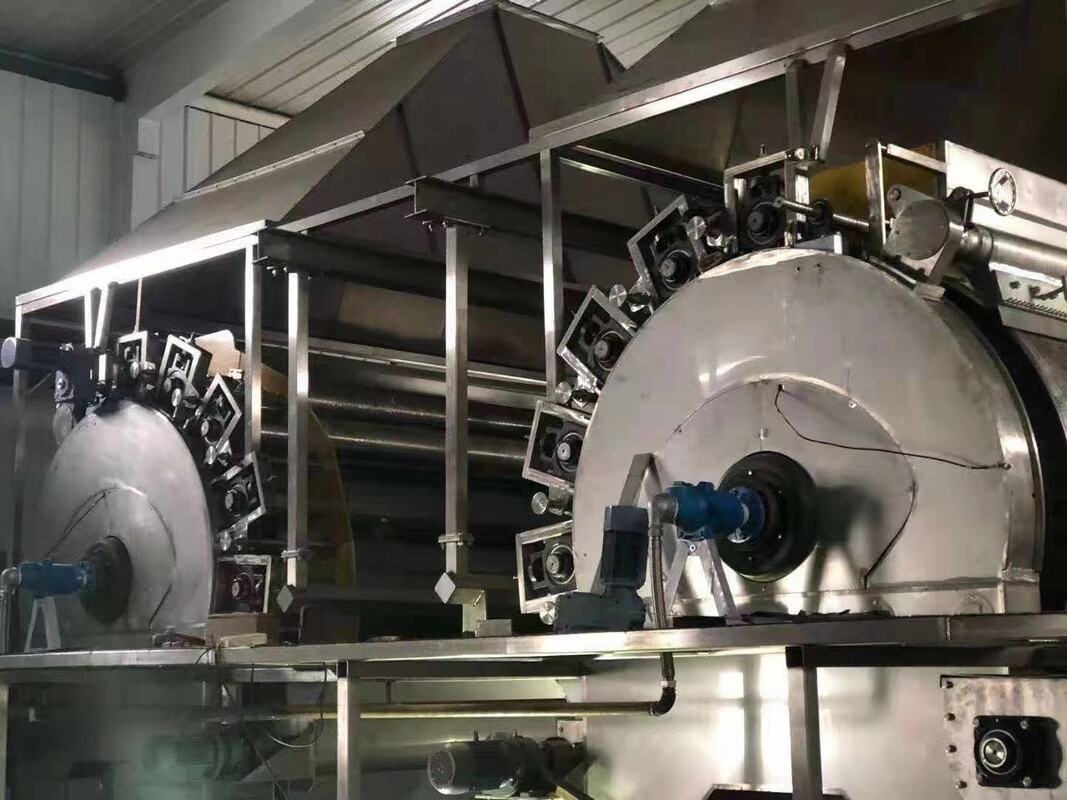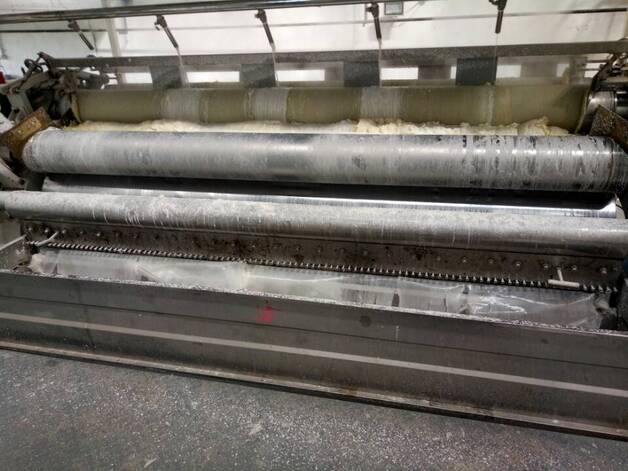|
Drying out products such as yeast and proteins can be hard without the use of a drum dryer. For those dealing with yeast slurry, it is important to use a double-drum dryer. The reason is that the drum dryer working principle of a double drum dryer is more likely to produce the kind of results that you would want and expect.
Double drum dryers are extremely useful because they, unlike a single drum dryer, do not use applicator rollers. Double drum dryers only use two primary drums and no applicator rollers. However, drying out yeast products can be perfect for ensuring you get the right consistency and finish. Double Drum Dryer Working Principle: How Does This Work?When using a double drum dryer, the general consensus is to feed the slurry that you want to have dried out into the double drum gaps. This could be something like yeast, whey, proteins, or various other forms of yeast slurry. When fed into the main drums, the slurry will get stuck into the gaps of the drum. When the drum begins its rotation, the slurry should stick to the surface of the drum as well. When stuck to the surface of the heated drum, as it rotates this delivers a thorough and comprehensive drying process. As the drum rotates, this will continue to ensure that more of the slurry is being impacted by the heated drums, ensuring that all of the slurry is dried out properly. When allowed to rotate for a long enough time, this should result in the entire slurry drying out as it should. Over time, the slurry will eventually come off as the drum rotates. This can be scraped off the double drum dryer and then put into a breaker for storage so that it can be used for any purpose you might have. Also, a fan system will be implemented when a double-drum dryer is in use. This fan system will help ensure that the vapour produced by the drier is not being put into the air where you are working. Instead, a hood and then a compartment in the roof will ensure that the vapour is moved outside into the open air to dispel that vapour build-up. By controlling the pressure level within the double drum dryer, its working principle maintains a constant drying temperature. The result is much more consistent, creating a much cleaner and controlled dryness. When used within professional settings, this can help to avoid wastage and make sure that any yeast produce that has to be dried out can be done so in a way that is effective, reliable, and consistent. This is the general working principle of a double drum dryer when used. The machinery we provide at Dongtai Renhui Machinery Co. Ltd ensures you receive this same working principle for any double drum dryer you invest your money in. The result is that you are left with a dried-out yeast product that you can use in any way you need for your own ends.
0 Comments
There is a common drum dryer working principle for using a single drum dryer. Generally, this is done by adding the slurry that will be drum-dried. This could be something like starch, flour, oats, or anything else you wish to use a drum dryer for. The starchy slurry is fed to the application rolls, which means that this starch-rich slurry will stick to the applicators.
Then, as the drum rotates, this will mean that the slurry gets stuck to the surface of the drum. As the drum continues to rotate and move around, the layer attached to it begins to dry completely. When finished, this can be extracted from the drum dryer simply by scraping it off and then placed into a breaker. Using a fan also helps to remove any vapour produced by the drier as it works; this is expended via a hood into the roof and out into the open air. To ensure the best single-drum dryer working principle, the temperature is indirectly kept at a constant level. This is done by controlling the pressure level within the drum itself. Starch cells are transferred to the drying drum via the contact zones of the applicator. The layer being dropped onto the drum itself is then kept at a steady temperature thanks to constant contact with a heated surface. This means the drying time is extremely quick and simple compared to other methods. This is one of the main reasons why using a drum dryer can lead to a dried product that retains its quality and taste. Other drying methods can almost burn the produce dry, leading to a drop-off in product quality. With a drum dryer, though, the technique mentioned above helps to make sure that nothing is burnt or overly dried. Thanks to the single drum dryer acting as a separator, too, this helps to ensure that non-cooked starch fragments are not transferred into the drum itself. This means that they retain their position on the rotating layer on the applicator rolls. This helps to ensure that the applicator rollers – of which there can be anything from two to seven present in a single drum dryer – help keep the right balance. The end result is that you are left with a product that dries out properly without impacting the quality, consistency, or usability of the food product itself. Ensuring that non-cooked fragments are not transferred into the drum helps ensure that the dried-out starch is good to be used once it has been scraped out of the drum dryer. The general working principle of drum dryer appliances, then, is simple to follow along with and to use in your day-to-day operations. The drum dryer working principle explained above can provide useful information to understand precisely how your equipment operates. By making sure that the heating process is as consistent as possible, there is a certainty that you can get the right level of heat and dryness applied to the starch goods that you wish to have dried out properly. Pregel starch (also known as alpha starch) is the heating of β starch (raw starch) in the presence of a certain amount of water or hydrophilic solvent, using water or hydrophilic solvent to break the intermolecular hydrogen bond and destroy its regular arrangement Micelle structure. After it is completely gelatinized, it is quickly dried at high temperature, and the resulting hydrogen-bonded, porous, starch particles without obvious crystals are obtained. Compared with β starch, pregel starch has the characteristics of high dispersibility, high oil absorption, high hydration speed, high viscosity and high expansion. Can be widely used in food (especially fast food), medicine, chemical industry, textile, feed and other industries, as an adhesive, adhesive, thickener, sizing agent, etc.
The production of pregel starch with a drum dryer has the advantages of low energy consumption, water saving and less floor space.Paragraph. |
AuthorSinodryer ArchivesCategories |
Quick links |
cHOOSE A LANGUAGE |
FOLLOW US |
coNTACT DETAILS
|





 RSS Feed
RSS Feed